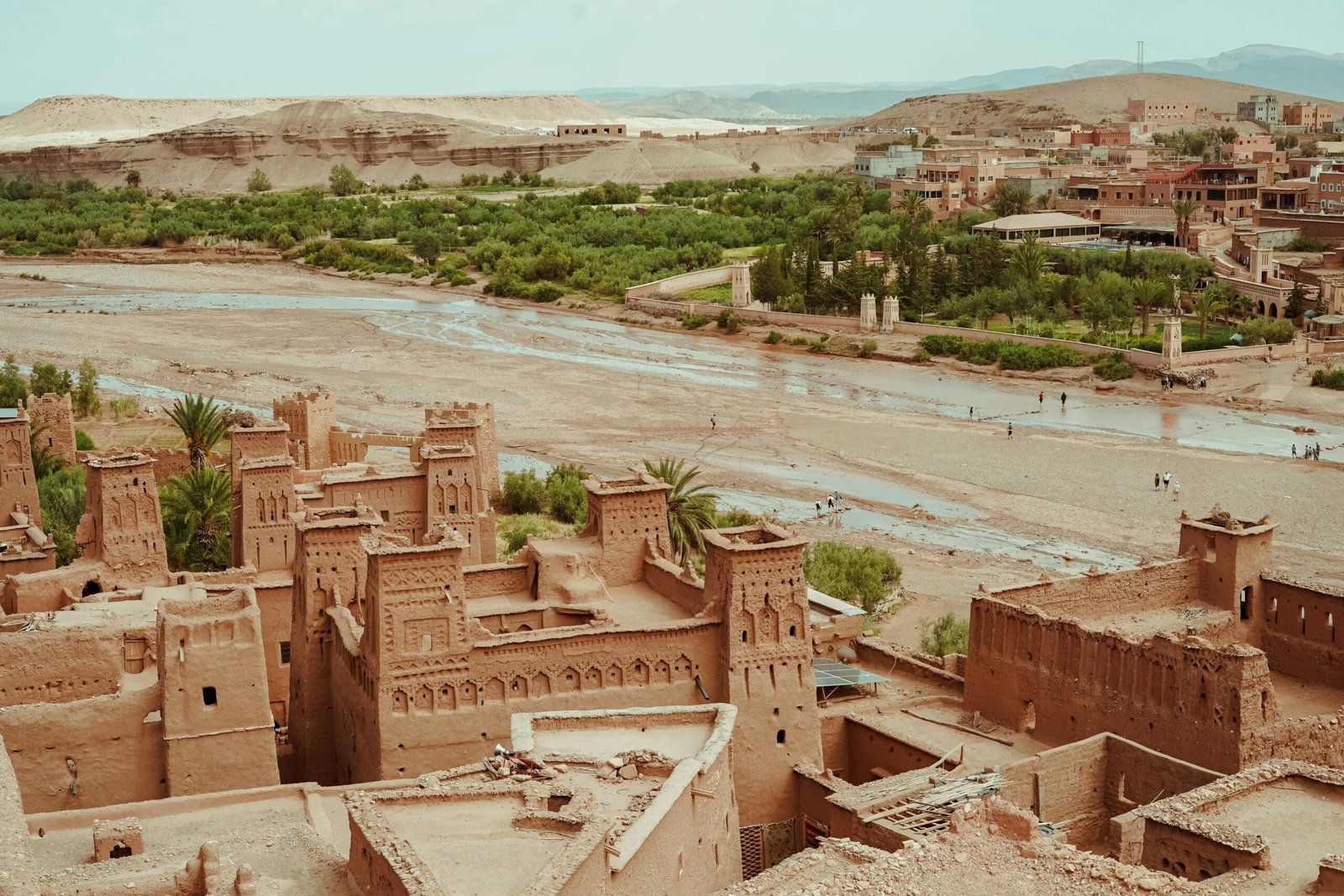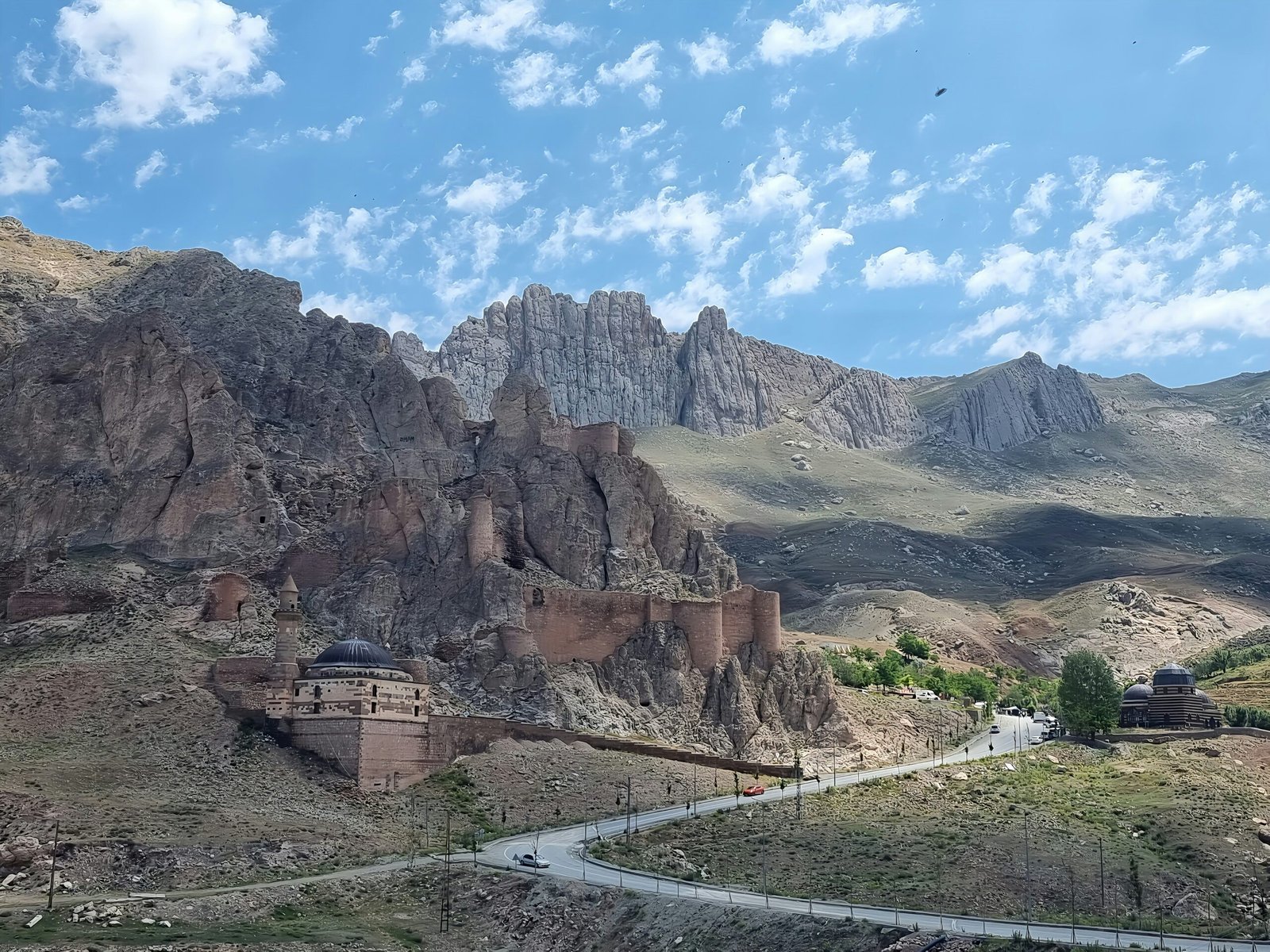Introduction to UNESCO World Heritage Sites in India
UNESCO World Heritage Sites are landmarks or areas recognized by the United Nations Educational, Scientific and Cultural Organization (UNESCO) for their cultural, historical, scientific, or other forms of significance. The purpose of the World Heritage designation is to encourage the protection and preservation of these sites, which embody the cultural and natural heritage of humanity. India, with its rich history and diverse cultural landscape, is home to a remarkable array of UNESCO World Heritage Sites that reflect the country’s multifaceted heritage.
The criteria for selection as a World Heritage Site hinge on the universal value of the site, as determined by its outstanding features that collectively represent human creativity, significant historical events, or natural phenomena. In India, there are numerous sites that meet these criteria, ranging from ancient temples and forts to natural parks and landscapes that possess ecological significance. As of October 2023, India boasts more than forty recognized sites, each contributing uniquely to the global cultural and natural fabric.
These heritage sites vary significantly, encompassing intricate architectural wonders, historical monuments, and areas of exceptional natural beauty. For example, the Taj Mahal in Agra is celebrated for its architectural brilliance and romantic history, while the Western Ghats are recognized for their biodiversity and ecological importance. Each site tells a story that is integral to understanding India’s past and its ongoing legacy. Furthermore, the preservation of these sites not only fosters national pride but also serves as a draw for international tourism, providing vital economic and educational opportunities. As we explore India’s UNESCO World Heritage Sites, we will delve into some of those that lie off the beaten path, highlighting their significance and the importance of their conservation.
The Importance of Off the Beaten Path Exploration
Exploring lesser-known UNESCO World Heritage Sites offers travelers a multitude of benefits that extend beyond the conventional tourist experience. While popular destinations often provide a glimpse into a country’s rich history and vibrant culture, the sites that are off the beaten path present unique opportunities for authentic interactions and a deeper understanding of local traditions. Visiting these hidden gems allows one to immerse in the surroundings without the overwhelming crowds that typically accompany more famous locations.
One significant advantage of exploring these lesser-traveled paths is the opportunity for unique experiences. Lesser-known heritage sites often retain a sense of authenticity that can be diminished in more heavily visited areas. Visitors are more likely to engage with local artisans, participate in traditional ceremonies, and taste regional cuisine that may not be easily accessible in tourist hotspots. This personal interaction enhances the travel experience, fostering a meaningful connection that enriches one’s understanding of the local culture.
Peace and tranquility are additional draws to off-the-beaten-path exploration. Those who venture away from the mainstream tourist circuit can find solace in serene surroundings, allowing for reflection and rejuvenation amidst natural beauty. The slower pace at these sites enables a deeper appreciation of the history and context surrounding these heritage locations, fostering a greater sense of appreciation for the culture and history they embody.
Furthermore, traveling to these sites can have a positive impact on local communities. By choosing to visit and support lesser-known areas, travelers can contribute to the economic wellbeing of rural and marginalized populations. This responsible approach to tourism encourages the preservation of cultural heritage and promotes sustainable practices, ensuring that future generations can enjoy these invaluable sites.
Hidden Gems: Lesser-Known UNESCO Sites in India
India, with its exceptional diversity, is home to numerous UNESCO World Heritage Sites that are often overshadowed by more famous counterparts. Among these hidden gems is the Great Himalayan National Park, located in Himachal Pradesh. This remarkable site, inscribed as a World Heritage Site in 2014, is renowned for its breathtaking landscapes, unique ecosystems, and rich biodiversity. Spanning over 1,171 square kilometers, the park is a hotspot for varied flora and fauna, housing several rare and endangered species. Its pristine environment attracts trekkers and adventure enthusiasts, providing a thrilling opportunity to engage with nature while learning about conservation efforts in the region.
Another lesser-known site is the Churches and Convents of Goa, which reflect the influence of Portuguese colonization in India. Recognized as a UNESCO World Heritage Site in 1986, these architectural marvels symbolize the convergence of Indian and European cultures. The intricate designs and majestic structures, including the Basilica of Bom Jesus and the Sé Cathedral, are testimonies to the rich history and cultural fusion that has shaped Goa. The vibrant murals, unique altarpieces, and serene ambiance of these churches make them alluring destinations for visitors seeking to delve into the region’s historical narrative.
Surat, once a thriving port city, is also home to a UNESCO World Heritage Site that often remains unnoticed. The Urban Settlement of Surat showcases a remarkable fusion of cultures due to its historical significance in trade and commerce. Recognized for its strategic location, Surat became a melting pot of diverse cultures, evident through the remnants of its grand architecture, bustling markets, and vibrant street life. Exploring Surat unveils a tapestry of traditions that have withstood the test of time, offering visitors a unique glimpse into the city’s rich heritage.
Tips for Visiting Offbeat Heritage Sites
Visiting offbeat UNESCO World Heritage Sites in India can be a rewarding experience, offering travelers an intimate glimpse into the country’s rich cultural history. To maximize your journey, consider the following practical tips.
Firstly, transportation is a critical aspect of reaching these less-trafficked sites. Depending on the location, options may include hiring a private vehicle, utilizing local buses, or considering train travel, especially for distant sites. Apps for ridesharing or local taxi services can also be invaluable. Be sure to verify the accessibility of each site through local travel forums or blogs, as some may require pre-arrangements for transportation.
The timing of your visit can significantly impact your experience. Researching the best months to visit is crucial, as some sites may be prone to heavy monsoon rains or extreme winter conditions. Consider visiting during the shoulder seasons, which often offer pleasant weather and fewer crowds. Moreover, early morning excursions can enhance your visit, allowing you to explore in relative solitude and experience the sites in their serene state.
When venturing to these off-the-beaten-path locations, be prepared for varying levels of facilities and amenities. Some heritage sites may offer minimal infrastructure, making it advisable to carry essential supplies such as water, snacks, and a first-aid kit. Familiarize yourself with the local customs and practices, as this knowledge can enhance your interactions. Engaging with local communities through workshops, guided tours, or culinary experiences will deepen your appreciation of the region’s culture.
By following these tips and being open to adventure, you can enjoy a unique exploration of India’s lesser-known UNESCO World Heritage Sites that promises to be both enriching and memorable.
Cultural Festivals and Events at Heritage Sites
India is rich in cultural diversity, and its UNESCO World Heritage Sites serve as significant venues for various festivals and events that showcase local traditions and customs. These celebrations not only enhance the experience of visitors but also offer unique insights into the cultural fabric of the regions surrounding the heritage sites.
For instance, the Jaipur Literature Festival, often held near the Amer Fort, invites literary enthusiasts from around the world to engage in discussions, promote literature, and celebrate the arts. As attendees flock to this vibrant event, they also immerse themselves in the exquisite architecture and rich history of the fort, which provides a stunning backdrop to the ongoing literary conversations.
Another noteworthy event is the Durga Puja festival in West Bengal, where the iconic temple of Dakshineswar Kali is located. This festival, typically celebrated in the autumn, sees lavish decorations, traditional music, and performances. Visitors can participate in the rituals and understand the cultural significance of this festival deeply rooted in local customs, all while appreciating the heritage site’s intricate designs and spiritual ambiance.
Moreover, the Rani Durgavati Samaroh in Madhya Pradesh, hosted at the Sanchi Stupa, exemplifies how cultural events can bridge gaps between past and present. This festival commemorates the valor of Rani Durgavati, engaging visitors in folk performances, art displays, and local cuisines, thus intertwining history with contemporary celebrations.
Such festivals at UNESCO World Heritage Sites offer rich experiences that extend well beyond mere observation. They encourage active participation, fostering appreciation and respect for the diverse traditions of India. As visitors engage with these cultural events, they develop deeper connections to the heritage and the vibrant communities that celebrate these age-old customs.
Conservation Efforts for UNESCO Sites
India is home to a remarkable array of UNESCO World Heritage Sites, many of which are lesser-known yet embody rich historical and cultural significance. The conservation of these sites is vital not only for preserving their integrity for future generations but also for maintaining their role in promoting tourism and local economies. Conservation efforts face numerous challenges, including environmental degradation, urban encroachment, and insufficient funding. These factors can severely impact the longevity of these cultural treasures.
Local initiatives play a crucial role in the preservation of UNESCO sites. Residents often take the lead in advocating for sustainable practices and participating in community-based programs designed to protect and restore these sites. These initiatives can range from clean-up drives and educational workshops to promoting responsible tourism practices that discourage vandalism and encourage respect for cultural heritage. Additionally, partnerships between local communities and governmental organizations are essential in implementing effective conservation strategies.
Non-profit organizations also contribute significantly to the conservation landscape. Many of these entities focus on raising awareness about the importance of protecting these historical sites and mobilizing resources for restoration projects. Their efforts often include fundraising campaigns, as well as educational programs aimed at tourists and local populations. Effective communication about the value of these locations can foster a sense of ownership and pride, encouraging visitors to engage in preservation efforts actively.
As visitors, individuals can support conservation efforts by practicing responsible tourism. This includes adhering to site regulations, respecting local customs, and participating in guided tours that promote awareness about the challenges of preservation. By being mindful of their impact, tourists can contribute positively to the sustainability of India’s UNESCO World Heritage Sites, ensuring that these invaluable cultural landmarks endure for generations to come.
Personal Stories from Travelers
Traveling to lesser-known UNESCO World Heritage Sites in India has become increasingly popular among adventurous tourists seeking to explore the country’s rich heritage beyond the well-trodden paths. Many travelers share engrossing stories about their experiences at these unique locations, highlighting the profound connections they developed with local culture and history.
One traveler recounts their visit to the ancient town of Hampi, a UNESCO site that boasts a mesmerizing collection of ruins from the Vijayanagara Empire. They describe an early morning walk among the boulders, where they stumbled upon enthusiastic local artists painting vibrant murals that reflect their interpretations of traditional themes. This encounter not only deepened the traveler’s appreciation for Indian artistry but also demonstrated how heritage is celebrated and revitalized at grassroots levels.
Another notable story comes from a couple who ventured to the stunning hill station of Khangchendzonga National Park. They were captivated by the breathtaking landscape and serene atmosphere, which starkly contrasted with the hustle and bustle of major cities. During their hike, they learned about the local communities’ sustainable practices and cultural festivals, allowing them to witness firsthand the harmony between nature and tradition. They noted that this profound experience fostered a greater respect for environmental conservation and the importance of preserving cultural values.
These personal anecdotes illustrate the transformative effect of visiting off-the-beaten-path UNESCO World Heritage Sites in India. Each story serves as a reminder that the country’s cultural tapestry extends far beyond the famous landmarks, inviting travelers to engage deeply with its history, people, and breathtaking landscapes. Such encounters with India’s heritage not only enrich the travel experience but also contribute to a greater understanding of the diverse narratives that shape this vibrant nation.
The Role of Local Communities in Heritage Conservation
Local communities play a crucial role in the conservation of UNESCO World Heritage Sites, serving as both custodians and advocates of their cultural heritage. Their intimate knowledge of local history, traditions, and ecosystems provides invaluable insights that can inform effective conservation strategies. By participating in heritage preservation efforts, community members not only protect their cultural identity but also foster a sense of belonging and pride among residents.
One of the most significant contributions local communities make is their involvement in sustainable tourism practices. When communities actively engage in tourism, they ensure that the benefits of visiting UNESCO sites are shared equitably among residents. This involvement helps to create an economic incentive for the preservation of heritage sites, as the income generated can be reinvested into local initiatives. Moreover, community-led tourism fosters deeper connections with visitors, allowing them to experience heritage in a meaningful way, rather than as mere spectators.
Furthermore, the collaboration between local communities and governmental or non-governmental organizations can lead to the development of comprehensive conservation programs. By combining traditional ecological knowledge with modern conservation techniques, these partnerships can address threats such as climate change, urbanization, and degradation of natural resources. Community stakeholders often serve as informants for maintaining and sustaining heritage practices, ensuring that the cultural significance of these sites is not lost over time.
Involving local communities in the ongoing narrative of conservation instills a culture of stewardship that transcends generations. Their participation ensures that the values and stories associated with UNESCO World Heritage Sites are preserved not only for future visitors but also for the cultural identity of the local population. Ultimately, the synergy between heritage conservation and local community engagement results in a richer and more sustainable preservation effort, enhancing the integrity of these irreplaceable cultural landmarks.
Conclusion: Embracing the Journey Off the Beaten Path
As travelers seek to expand their horizons, exploring lesser-known UNESCO World Heritage Sites in India can provide an enriching experience that goes beyond the usual tourist trail. While popular destinations undoubtedly offer historical significance and breathtaking beauty, the hidden gems found off the beaten path often reveal their own unique charm and stories. Each journey to these lesser-explored sites opens doors to a deeper understanding of India’s diverse culture, history, and natural landscape.
Venturing into the lesser-known heritage sites not only allows for personal growth but fosters connections with local communities. Travelers often find that these sites, away from the bustling crowds, provide a more authentic experience, allowing for meaningful interactions with local residents and a chance to learn about their traditions and lifestyles. These connections can enhance one’s understanding of the cultural tapestry that India embodies, making each visit memorable and insightful.
Moreover, exploring these hidden treasures encourages individuals to embrace spontaneity and the unexpected. Often, the most rewarding travel experiences arise from unplanned adventures and unexpected discoveries. By stepping off the beaten path, individuals may encounter picturesque landscapes, unique architectural styles, and historic narratives that are lesser-known yet equally captivating. Each moment spent in these environments contributes to a larger travel story that enriches the soul and expands one’s worldview.
In essence, travel transcends mere destination; it is intertwined with the journeys we embark upon, the stories we tell, and the connections we forge along the way. By embracing the adventure of exploring lesser-known UNESCO World Heritage Sites in India, travelers can create lasting memories and gain insights that profoundly shape their perspectives. Therefore, the call to action is clear: venture off the well-trodden path and immerse yourself in the beauty and wonder of India’s oft-overlooked heritage.













